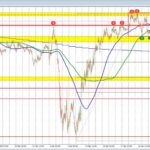Texas Manufacturing in Crisis: The Dallas Fed’s Shocking April 2025 Decline
Tháng 4 28, 2025
AUD/USD Trading Insights: Key Resistance Levels and Market Opportunities
Tháng 4 28, 2025Analyzing Historical Stock Market Performance During Presidential Transitions: Trump vs. Nixon’s First 100 Days
The stock market often reflects the economic sentiment and political conditions of its time, particularly during periods of presidential transition. An intriguing comparison can be drawn between the first 100 days of Donald Trump’s presidency and Richard Nixon’s, both of whom faced unique challenges that influenced market behavior. This analysis dives into the circumstances surrounding their respective administrations and examines how these factors contributed to stock market performance.
Nixon’s First 100 Days: Challenges and Economic Turmoil
Richard Nixon ascended to the presidency in January 1969, when the United States encountered significant economic challenges. His early months were marked by rising inflation and a slowing economy, which contributed to an impending recession that would officially begin in 1969 and last into 1970. The economic uncertainty during Nixon’s presidency had considerable ramifications for the stock market.
During Nixon’s initial 100 days, the stock market was affected by a myriad of factors including high-interest rates and consumer distress stemming from inflationary policies. Notably, Nixon implemented wage and price controls in an effort to curb inflation, which further heightened market instability. Investors, apprehensive about the unfolding recession and Nixon’s unorthodox economic measures, were reluctant to invest, leading to a stagnant stock market performance during these early months. This situation underscores the importance of understanding how to navigate challenging market conditions, as outlined in articles like this one on key investment mistakes to avoid in 2023.
Trump’s First 100 Days: Volatility Amid Expectations
Transitioning to modern history, Donald Trump was inaugurated as president in January 2017 amid a politically charged atmosphere that would inevitably impact the financial markets. Trump’s first 100 days were characterized by volatility, initially referred to as the “Trump Rally,” where stock indexes surged based on investor optimism surrounding anticipated tax cuts and deregulation. However, this optimism quickly faced challenges.
Contrary to the positive expectations, market performance during Trump’s first 100 days was more complicated. Factors such as policy uncertainty—including his administration’s unpredictable communication strategies—and geopolitical tensions created a degree of apprehension among investors. The stock market navigated through periods of significant fluctuations, resulting in a mixed performance that reflected both the fear of and hope for the changes Trump promised. It’s crucial for investors to be aware of psychological missteps during such transitions, as highlighted in this guide on three investment mistakes to avoid for success.
Comparative Analysis: Market Performance and Policy Impacts
While both Nixon and Trump faced tumult during their first 100 days, the context and implications of their presidencies yielded starkly different stock market responses. Nixon’s tenure started amidst systemic economic issues that inherently placed downward pressure on the stock market. Conversely, Trump’s period was initially marked by exuberance for potential reforms overshadowed by the lack of clarity in executing those policies.
Recent analyses, including insights from CNBC, indicate that both presidencies had their early stock market challenges. Investors closely monitored economic indicators such as GDP growth, employment rates, and inflation trends, both of which played significant roles in shaping market sentiment. In Trump’s case, policy announcements and executive actions crafted a narrative that led to stock market fluctuations, while Nixon’s decisions came at a time when recession fears were at the forefront of investor concerns. For those interested in the enduring relevance of value investing and understanding market sentiment, further exploration can be found in this discussion on why value investing beats the market according to Greenblatt.
Conclusion: Lessons from Historical Precedence
A comparative analysis of Nixon and Trump’s first 100 days serves as a compelling reminder of how political leadership can influence market performance. The complexities of their respective economic contexts highlight the critical need for understanding the implications of policy uncertainty and the broader global economic environment. For investors and policymakers alike, these historical insights provide valuable guidance for navigating future market transitions.
To delve deeper into this topic, a review of ongoing analyses from leading financial news platforms, such as Bloomberg and Yahoo Finance, is recommended to keep abreast of current trends and insights relating to presidential impacts on the stock market.

